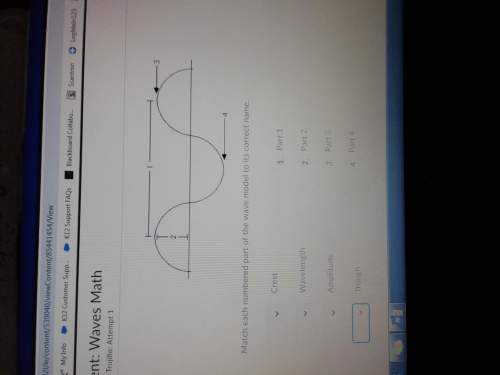
Physics, 07.03.2020 03:31 erikamaldonado661
In 1913 Niels Bohr formulated a method of calculating the differentenergy levels of the hydrogen atom. He did this by combining bothclassical and quantum ideas. In this problem, we go through thesteps needed to understand the Bohr model of the atom.
Consider an electron with charge -e and mass m orbiting in a circle around a hydrogen nucleus(a single proton) with charge +e. In the classical model, the electron orbitsaround the nucleus, being held in orbit by the between itself and the protons in the nucleus, muchlike planets orbit around the sun, being held in orbit by theirgravitational interaction. When the electron is in a circularorbit, it must meet the condition for circular motion: Themagnitude of the net force toward the center, F_c, is equal to mv^2/r. Given these two pieces ofinformation, deduce the velocity v of the electron as it orbits around thenucleus.
Express your answer in terms ofe, m, r, and epsilon_0, the permittivity offree space.

Answers: 1


Other questions on the subject: Physics

Physics, 21.06.2019 18:00, kadinmorgan
Aproton is projected toward a fixed nucleus of charge +ze with velocity vo. initially the two particles are very far apart. when the proton is a distance r from the nucleus its velocity has decreased to 1/2vo. how far from the nucleus will the proton be when its velocity has dropped to 1/4vo?
Answers: 3

Physics, 22.06.2019 12:10, aedelfrance9250
Aspring has a natural length of 8 m. if a 12-n force is required to keep it stretched to a length of 10 m, how much work w is required to stretch it from 8 m to 16 m? (round your answer to two decimal places.)
Answers: 1

Physics, 22.06.2019 12:30, clmorcutt420
Apositive charge moves in the direction of an electric field. which of the following statements are true? check all that apply. check all that apply. 1.the potential energy associated with the charge decreases. 2. the electric field does positive work on the charge. 3. the electric field does negative work on the charge. 4. the potential energy associated with the charge increases. 5. the electric field does not do any work on the charge. 6. the amount of work done on the charge cannot be determined without additional information.
Answers: 1

Physics, 22.06.2019 14:40, babygirl091502
The experiment done in lab is repeated, using a ball that has unknown mass m. you plot your data in the form of f 2 versus m/l, with f in rev/s, m in kg, and l in m. your data falls close to a straight line that has slope 3.19 m/(kg · s2). use g = 9.80 m/s2 and calculate the mass m of the ball.
Answers: 1
You know the right answer?
In 1913 Niels Bohr formulated a method of calculating the differentenergy levels of the hydrogen ato...
Questions in other subjects:

Mathematics, 17.07.2021 22:50





Mathematics, 17.07.2021 22:50

Mathematics, 17.07.2021 22:50

Mathematics, 17.07.2021 22:50


Mathematics, 17.07.2021 22:50




